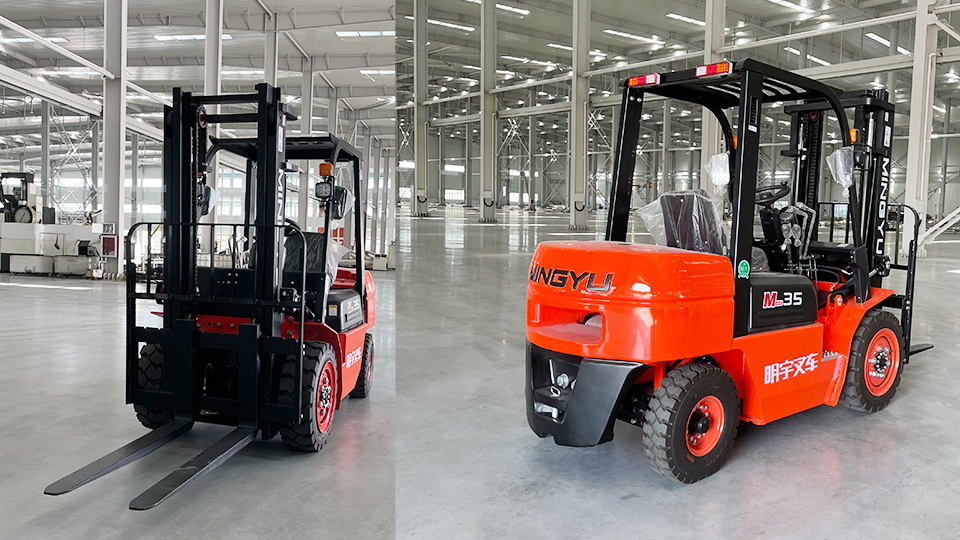
The accumulation of these harmful emissions in an enclosed indoor space can rapidly lead to hazardous air quality, posing immediate and long-term health risks to personnel working in the vicinity.
The Critical Role of Ventilation: A Necessary but Often Insufficient Solution
The most immediate and obvious countermeasure to the dangers of indoor diesel exhaust is effective ventilation. Introducing fresh air and expelling contaminated air can help to dilute the concentration of harmful emissions within the workspace. However, relying solely on ventilation as a solution presents several technical and practical challenges:
Ventilation System Design and Capacity: Designing and implementing a ventilation system capable of adequately handling the exhaust output of a diesel forklift requires careful engineering calculations, considering the size of the workspace, the rate of air exchange, and the duty cycle of the forklift. Insufficient ventilation will fail to maintain safe air quality levels.
Cost and Energy Consumption: High-capacity ventilation systems can be expensive to install and operate, incurring significant energy costs for fans and air handling units.
Practical Limitations: In many existing indoor facilities, retrofitting a sufficiently robust ventilation system may be physically challenging or cost-prohibitive. Open doors and windows, while providing some airflow, often offer inconsistent and inadequate ventilation, particularly in larger spaces or during adverse weather conditions.
Maintenance and Monitoring: Ventilation systems require regular maintenance to ensure optimal performance. Furthermore, continuous air quality monitoring is essential to verify the effectiveness of the ventilation and detect any potential buildup of harmful emissions. This adds complexity and cost to indoor diesel forklift operations.

The Evolution of Emissions Control Technologies: Mitigation, Not Elimination
Recognizing the environmental and health hazards associated with diesel engines, significant advancements have been made in emissions control technologies for diesel-powered equipment, including forklifts. These technologies aim to reduce the levels of harmful pollutants in the exhaust:
Diesel Oxidation Catalysts (DOCs): These devices use chemical reactions to convert carbon monoxide and hydrocarbons into less harmful carbon dioxide and water.
Diesel Particulate Filters (DPFs): DPFs physically trap and remove particulate matter from the exhaust stream. They require periodic regeneration, a process of burning off the accumulated soot at high temperatures.
Selective Catalytic Reduction (SCR): SCR systems inject a urea-based solution (Diesel Exhaust Fluid - DEF) into the exhaust stream, which reacts with nitrogen oxides in the presence of a catalyst to convert them into nitrogen and water.
Exhaust Gas Recirculation (EGR): EGR systems recirculate a portion of the exhaust gas back into the engine's intake manifold, which helps to lower combustion temperatures and reduce NOx formation.
Specific Indoor Applications and Considerations
While generally discouraged, there might be very specific and limited indoor applications where diesel forklifts are considered, often with stringent conditions:
Large, Well-Ventilated Warehouses: In exceptionally large indoor spaces with high ceilings and sophisticated, high-capacity ventilation systems designed specifically to handle diesel exhaust, temporary or limited use of diesel forklifts might be considered. However, continuous air quality monitoring and strict operational protocols would be essential.
Construction Sites (Partially Enclosed): On construction sites where areas might be partially enclosed but still have significant natural airflow, diesel forklifts are commonly used. However, even in these situations, attention must be paid to ventilation in more confined areas, and worker exposure should be minimized.
Emergency Situations: In emergency scenarios, such as power outages affecting electric forklifts, a diesel forklift might be temporarily used indoors for critical operations, but only with maximum available ventilation and strict time limitations.
In all such cases, a thorough risk assessment, detailed safety procedures, comprehensive operator training, and continuous air quality monitoring are absolutely paramount.
Conclusion: Proceed with Extreme Caution or Choose a Safer Alternative
The use of diesel forklifts indoors is a complex issue with significant technical, health, and regulatory implications. While advancements in emissions control technologies have reduced the levels of harmful pollutants, they have not eliminated them entirely. Relying solely on ventilation to maintain safe air quality can be challenging and costly.

Given the inherent dangers of diesel exhaust in enclosed spaces and the readily available, safer alternatives like electric and propane forklifts, the use of diesel forklifts indoors should be approached with extreme caution or, ideally, avoided altogether. Employers have a fundamental responsibility to provide a safe and healthy working environment for their employees, and minimizing exposure to harmful diesel emissions in indoor settings is a critical aspect of that responsibility.
The decision to use a diesel forklift indoors should only be made after a thorough risk assessment, consultation with safety and environmental professionals, implementation of robust ventilation and emissions control measures, continuous air quality monitoring, and strict adherence to all relevant regulations. In most indoor applications, the benefits of diesel power are significantly outweighed by the serious health risks and safety concerns associated with their exhaust emissions, making electric or propane-powered forklifts the far more prudent and responsible choice. The double-edged sword of diesel power is simply too sharp to wield carelessly in the confined spaces of indoor workplaces.
Name: selena
Mobile:+86-13176910558
Tel:+86-0535-2090977
Whatsapp:8613181602336
Email:vip@mingyuforklift.com
Add:Xiaqiu Town, Laizhou, Yantai City, Shandong Province, China